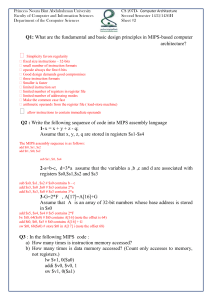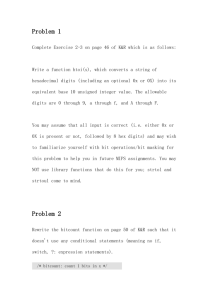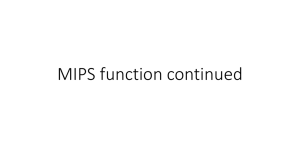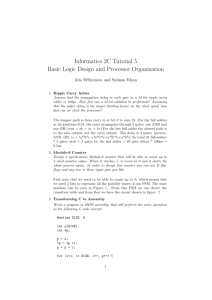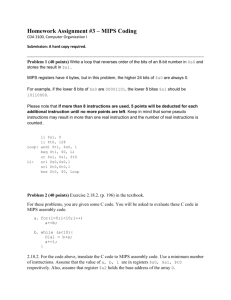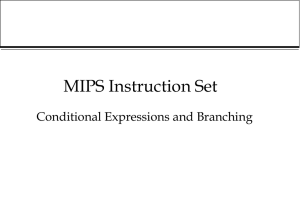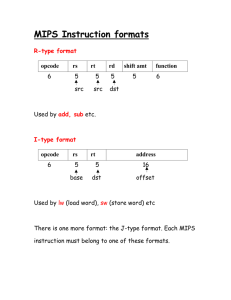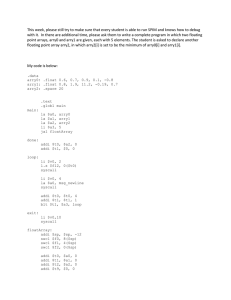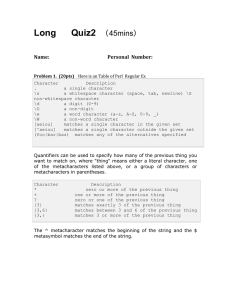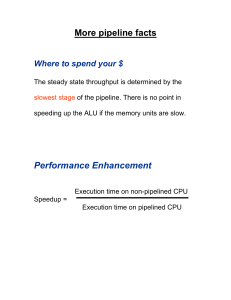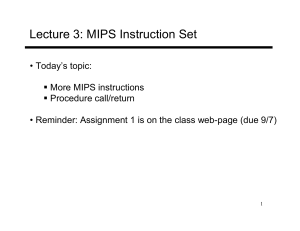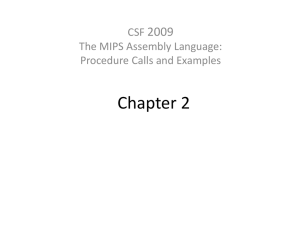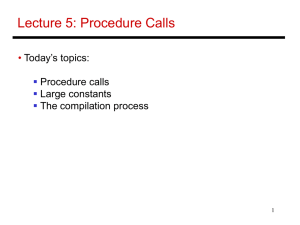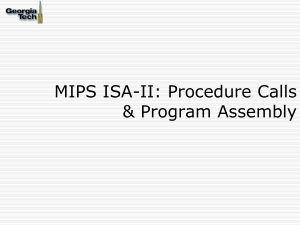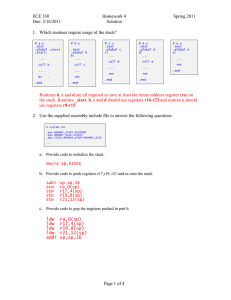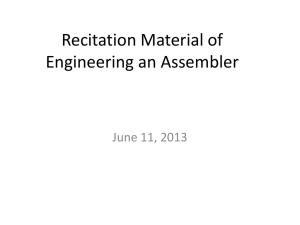378section3
advertisement
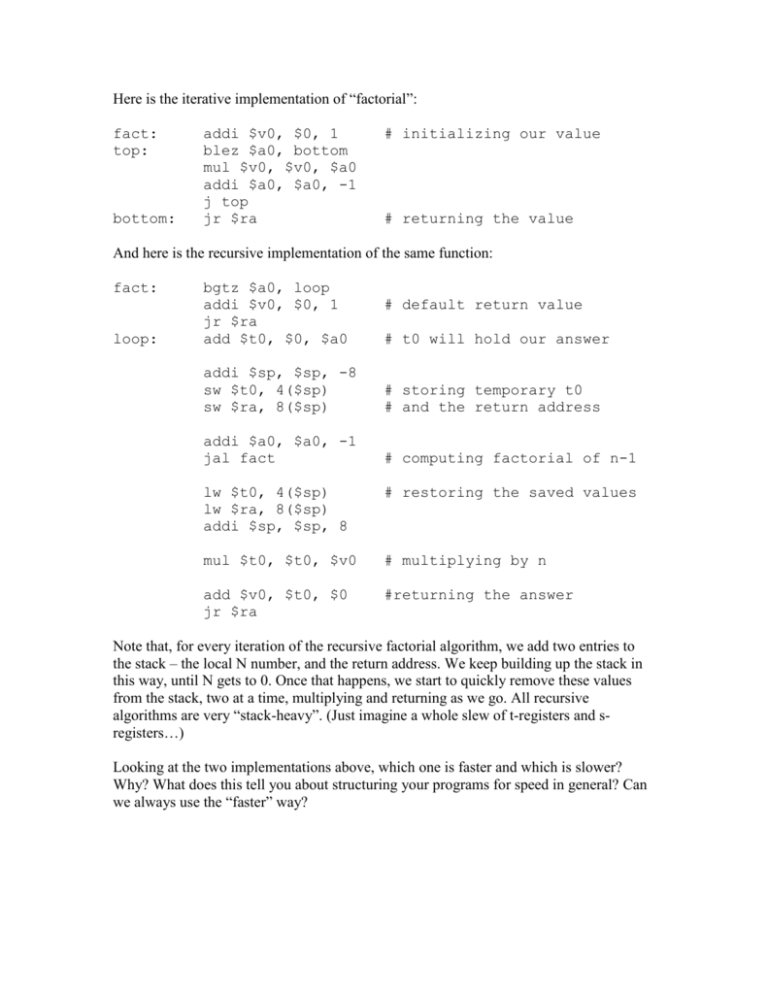
Here is the iterative implementation of “factorial”: fact: top: bottom: addi $v0, $0, 1 blez $a0, bottom mul $v0, $v0, $a0 addi $a0, $a0, -1 j top jr $ra # initializing our value # returning the value And here is the recursive implementation of the same function: fact: loop: bgtz $a0, loop addi $v0, $0, 1 jr $ra add $t0, $0, $a0 # default return value # t0 will hold our answer addi $sp, $sp, -8 sw $t0, 4($sp) sw $ra, 8($sp) # storing temporary t0 # and the return address addi $a0, $a0, -1 jal fact # computing factorial of n-1 lw $t0, 4($sp) lw $ra, 8($sp) addi $sp, $sp, 8 # restoring the saved values mul $t0, $t0, $v0 # multiplying by n add $v0, $t0, $0 jr $ra #returning the answer Note that, for every iteration of the recursive factorial algorithm, we add two entries to the stack – the local N number, and the return address. We keep building up the stack in this way, until N gets to 0. Once that happens, we start to quickly remove these values from the stack, two at a time, multiplying and returning as we go. All recursive algorithms are very “stack-heavy”. (Just imagine a whole slew of t-registers and sregisters…) Looking at the two implementations above, which one is faster and which is slower? Why? What does this tell you about structuring your programs for speed in general? Can we always use the “faster” way? Programming in C and C++: popular myths debunked. Myth #1: Global variables are bad. No, global variables are very useful, when used correctly. In fact, we have a whole section of program memory (the “data” section) for them. If used right, they can reduce the size of the program and make it faster, by decreasing the number of redundant local variables. (And in some cases they are inevitable – ask me why after class, if you want an in-depth reason.) Myth #2: Gotos are evil. No, no, and no. As you can see, a “goto” instruction simply maps to be an unconditional jump. And we use those all the time – to build loops for example. They are useful in C and C++ too, as long as you can keep your program flow straight. (Again, these are sometimes inevitable – ask me later, if interested.) Your Homework MIPS Program JVM Program [0] .text bytecode (text) .data local (data) (1024 bytes / 256 words max) heap stack (1024 bytes / 256 words max; statically allocated) stack [high] The JVM also has four special-use registers. These are the PCJVM, SPJVM, v1, and v2. Where are you going to “store” these? MIPS t-registers or s-registers are perhaps the best option. We will provide facilities to generate the JVM bytecodes. Questions?
